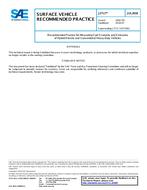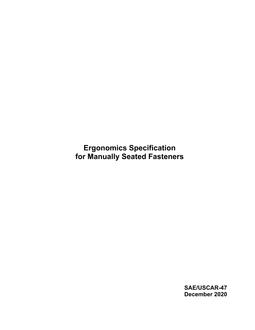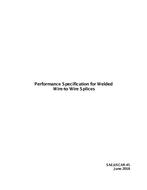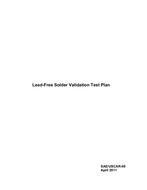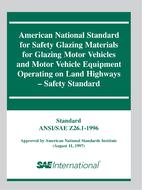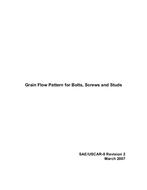Description
This SAE Recommended Practice was established to provide an accurate, uniform and reproducible procedure for simulating use of heavy-duty hybrid- electric vehicles (HEVs) and conventional vehicles on dynamometers for the purpose of measuring emissions and fuel economy. Although the recommended practice can be applied using any driving cycle, the practice recommends three cycles: the Manhattan cycle, representing low-speed transit bus operation; the Orange County Transit Cycle, representing intermediate-speed bus operation; and the Urban Dynamometer Driving Schedule (UDDS) cycle representing high-speed operation for buses and tractor-trailers. This document does not specify which emissions constituents to measure (e.g., HC, CO, NOx, PM, CO 2 ), as that decision will depend on the objectives of the tester. While the recommended practice was developed specifically to address the issue of measuring fuel economy and emissions for hybrid-electric heavy-duty vehicles on a chassis dynamometer, the document can also be applied to chassis testing of other heavy-duty vehicles.
This document builds upon SAE J1711, the light-duty HEV chassis recommended practice. As in SAE J1711, this document defines a hybrid vehicle as having both a rechargeable energy storage system (RESS) capable of releasing and capturing energy and an energy-generating device that converts consumable fuels into propulsion energy. RESS specifically included in the recommended practice are batteries, capacitors and flywheels, although other RESS can be evaluated utilizing the guidelines provided in the document. Further, the recommended practice provides a detailed description of state of charge (SOC) correction for charge-sustaining HEVs. This document also has a section which provides recommendations for calculating fuel economy and emissions for charge-depleting hybrid-electric vehicles. It should be noted that most heavy-duty vehicles addressed in this document would be powered by engines that are certified separately for emissions. The engine certification procedure appears in the Code of Federal Regulations, Title 40.
Product Details
- Published:
- 07/23/2018
- Number of Pages:
- 67
- File Size:
- 1 file , 830 KB
- Redline File Size:
- 2 files , 6.8 MB

